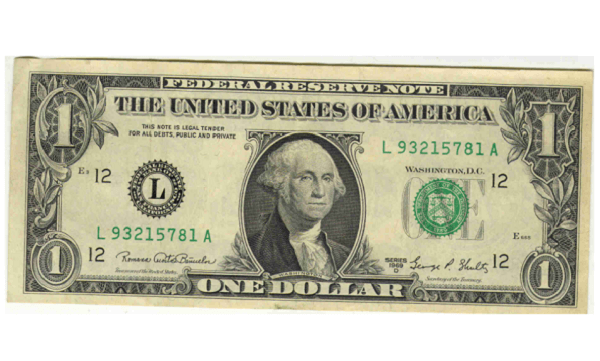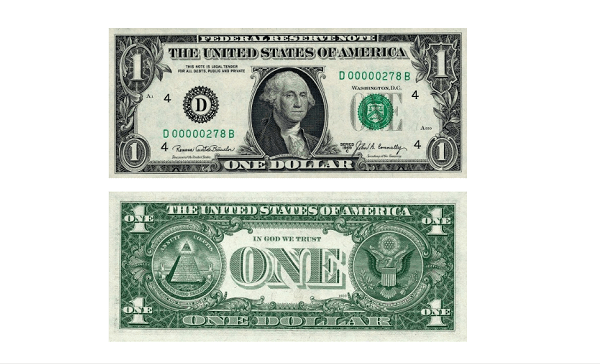1969 One Dollar Bill Value – The world of currency, the 1969 one dollar bill holds a unique place in history. While many might perceive it as an ordinary note with no exceptional value, there’s more to this piece of money than meets the eye.
The 1969 one dollar bill is not typically considered rare or highly valuable in the realm of currency collecting. These bills were part of a standard circulation during their time and are quite common in today’s currency market.
As such, the majority of these bills may not command much more than their face value.
However, within this seemingly ordinary category of dollar bills lies a distinctive variant known as star notes. Star notes are replacement notes printed to replace those with errors or issues during the initial printing process.
They are identified by a star symbol at the beginning or end of the serial number, hence the name “star notes.”

What makes these star note varieties of the 1969 one dollar bill more intriguing is their potential value beyond the standard notes. Collectors and enthusiasts often seek these star notes due to their relative scarcity compared to regular bills.
The rarity factor can drive their value up, making them more desirable among currency aficionados.
The year 1969 marks an era of change and transition in the United States, adding a layer of historical significance to these dollar bills. As a result, some collectors may place additional value on bills from this period due to their connection with a particular time in history.
Investigate further to see if your 1969 one dollar bill hides the elusive star note variety, which might just add a touch of rarity and value to your collection!
The 1969 One Dollar Bill Specifications
The 1969 one dollar bill, a Federal Reserve Note, bears the denomination of $1.00 USD.
Identified by the iconic green seal, this bill exists across various series: 1969, 1969A, 1969B, 1969C, and 1969D, each with distinct characteristics and nuances.
Assessing the Value of the 1969 One Dollar Bill
In its circulated state, the 1969 one dollar bill typically retains its face value of $1. However, when preserved in uncirculated condition, these bills can fetch a premium.

For instance:
- The 1969, 1969A, and 1969B series bills, in uncirculated condition with an MS 63 grade, are valued at around $4.50 each.
- The 1969C series holds a higher value, averaging around $6 in similar condition.
- The 1969D series bills command approximately $5.50 when in uncirculated condition with an MS 63 grade.
The Intrigue of Star Notes in 1969 One Dollar Bills
Star notes, issued as replacements by the U.S. Federal Reserve, introduced rarity and increased value to the 1969 one dollar bill series. Recognizing a star note is simple; look for a star symbol at the end of the serial number.
Notably, star notes from specific Federal Reserve Banks hold a higher value.
- Most 1969 series $1 star notes, in very fine condition, are valued around $4-5, rising to approximately $8.50 in uncirculated condition with an MS 63 grade.
- The 1969A series sees a similar range, with notes valued at $4-5 in very fine condition and escalating to $8.50-15 in uncirculated condition with an MS 63 grade.
- The 1969B series holds lower values, with notes at $2.75 in very fine condition and around $9 in uncirculated condition with an MS 63 grade.
- The 1969C series stands out as the most valuable star note series, ranging from $10-15 in very fine condition to a staggering $25-37.50 in uncirculated condition with an MS 63 grade. Notes from the Federal Reserve Bank of San Francisco peak at $110 in very fine condition and soar to $200 in uncirculated condition.
- The 1969D series varies between $5-6 in very fine condition and $11.50-13.50 in uncirculated condition with an MS 63 grade.
Grasping the Grading System for 1969 One Dollar Bills
Understanding the grading system is pivotal in determining the value of these bills:
- Very Fine: Notes that have seen circulation but remain relatively crisp, with minimal creases, folds, or light smudges.
- MS 63 Choice Uncirculated: Notes that display no signs of circulation, retaining their original crispness and well-centered alignment.
What is a rare $1 dollar bill?
Rare $1 dollar bills encompass various types and series, often distinguished by their historical significance, specific printing errors, limited production numbers, or unique variants.
Among the rarest are certain silver certificate dollar bills, prized by collectors for their scarcity and distinctive features.
Notably, the 1928C, 1928D, and 1928E versions of the $1 silver certificate bills stand out as some of the rarest and most sought-after in the world of currency collecting.
These particular series possess attributes that render them highly valuable in the eyes of collectors.
Given their scarcity and historical significance, $1 silver certificate bills from these specific series can command substantial prices, reaching up to $5,000, especially when they are in fine condition.
The condition of a bill plays a crucial role in determining its value, with bills in better preservation often fetching higher prices within the collector’s market.
These particular series – 1928C, 1928D, and 1928E – are among the rarest $1 dollar bills, there are other noteworthy editions and series that also carry significant value within the world of numismatics.
Conclusion
The 1969 one dollar bill might not inherently possess high value for most circulated bills, but the existence of star note variants introduces a fascinating dimension of rarity and increased worth.
If you’re an avid collector or a curious observer, exploring the 1969 one dollar bill and its diverse variations offer a glimpse into the nuanced world of numismatics.
Discovering a star note within your possession might just unveil a hidden treasure, transcending the perceived face value and adding a unique piece to your collection.
Keep an eye out for these star notes or preserved uncirculated bills, as they might carry a worth beyond what meets the eye, serving as a testament to the intricate history and value concealed within the 1969 one dollar bill.